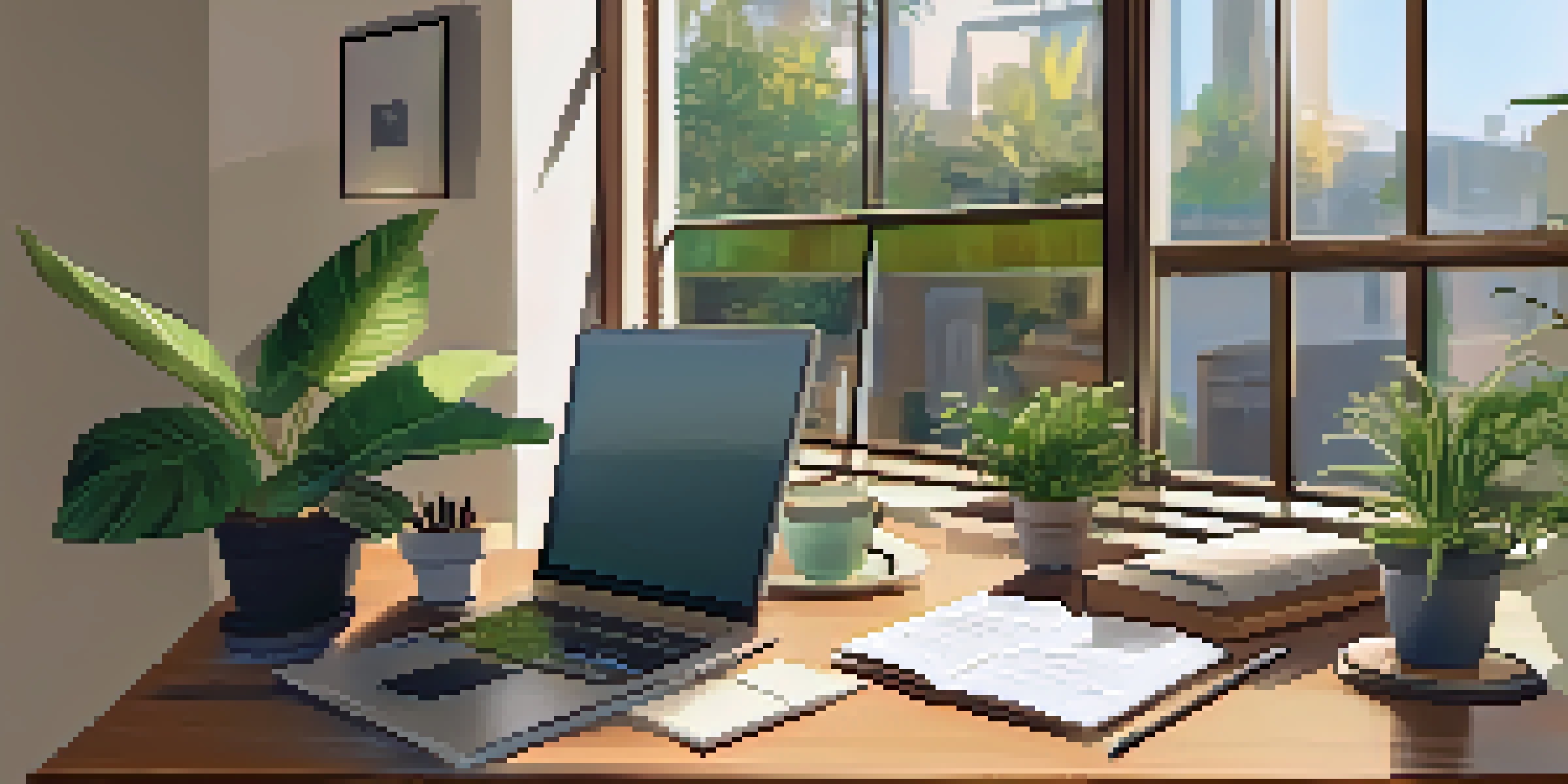How to Provide Constructive Feedback in Digital Assessments

Understanding Constructive Feedback in Digital Contexts
Constructive feedback is essential in any learning environment, especially in digital assessments. It focuses on providing specific guidance that helps learners improve their performance. Rather than simply stating what is wrong, it encourages growth and development through thoughtful suggestions.
Feedback is the breakfast of champions.
In digital assessments, this feedback can be delivered through comments, annotations, or even video messages. The key is to ensure that the feedback is clear and actionable, allowing learners to understand exactly what they need to do next. This approach fosters a positive learning atmosphere, even in virtual spaces.
Additionally, constructive feedback helps build a bridge between the evaluator and the learner. It creates a sense of partnership in the learning process, where both parties are working together towards improvement. This relationship is crucial in maintaining motivation and engagement.
Creating a Feedback-Friendly Environment
To provide effective feedback, it's vital to create an environment that encourages openness and receptiveness. This means fostering a culture where learners feel safe to express their thoughts and questions without fear of judgment. When learners are comfortable, they are more likely to engage with feedback positively.

In digital platforms, this can be achieved through user-friendly interfaces that allow for easy communication. Features like chat functions or discussion boards can facilitate ongoing dialogue between assessors and students. Such interactions can demystify the feedback process and make it feel less intimidating.
Value of Constructive Feedback
Constructive feedback fosters growth by providing specific guidance that helps learners improve their performance.
Moreover, establishing norms around feedback can enhance the experience. For example, setting clear expectations about how feedback will be given and received can help learners prepare mentally and emotionally. This structure can lead to more productive conversations about their work.
Being Specific: The Power of Detail
One of the most effective ways to deliver constructive feedback is by being specific. Instead of vague comments like 'good job' or 'needs improvement', focus on particular aspects of the work. For example, instead of saying 'your argument is weak', you might say 'consider providing more evidence to support your claim'.
What we fear doing most is usually what we most need to do.
Specific feedback not only clarifies what needs to change but also reinforces what the learner did well. This balanced approach can motivate learners to continue building on their strengths while addressing their weaknesses. It shows that you recognize their efforts and want to help them succeed.
Using examples from their work can further enhance specificity. Pointing out exact phrases or sections that excel or fall short makes the feedback more relatable. This tactic helps learners visualize the changes they need to make, ultimately empowering them to take actionable steps.
Balancing Positive and Negative Feedback
The balance between positive and negative feedback is crucial in maintaining learner motivation. While it’s important to highlight areas needing improvement, it’s equally essential to recognize achievements. This balance helps learners feel valued and understood, which can significantly impact their willingness to engage with the feedback.
Using the 'sandwich' method—starting with positive feedback, followed by constructive criticism, and ending with more positive notes—can be an effective strategy. This technique softens the blow of negative feedback and helps learners remain open to suggestions for improvement. It’s all about fostering a supportive dialogue that encourages growth.
Creating a Supportive Environment
A feedback-friendly atmosphere encourages openness and receptiveness, enabling more productive conversations between assessors and learners.
Additionally, responding to a learner's emotional state can be beneficial. If they seem discouraged, acknowledging their hard work before diving into areas for improvement can provide the boost they need to stay motivated. It’s all about creating a dialogue that feels like a partnership rather than a critique.
Using Technology to Enhance Feedback Delivery
In our digital age, leveraging technology can significantly enhance feedback delivery. Tools like video feedback, annotated documents, or audio comments can make the feedback process more engaging. These methods allow assessors to convey tone and intent, which can often be lost in written text.
For instance, a video message can convey enthusiasm and encouragement that might not come across through written comments alone. This personal touch can create a stronger connection between the assessor and the learner, making the feedback feel more meaningful. It’s all about using the tools available to make your feedback resonate.
Furthermore, many digital platforms offer analytics that can help tailor feedback based on learner performance. By using data to understand common pitfalls or strengths, you can provide targeted advice that addresses specific needs. This approach not only saves time but also ensures that feedback is relevant and impactful.
Encouraging Self-Assessment and Reflection
Encouraging learners to engage in self-assessment can enhance the feedback process. By reflecting on their work before receiving feedback, learners can identify areas they believe need improvement. This practice fosters critical thinking and self-awareness, essential skills in any learning journey.
You can guide this process by asking specific questions that prompt reflection. For example, asking, 'What parts of your project do you feel most confident about?' can help learners articulate their thoughts and feelings regarding their work. This dialogue can lay the groundwork for more effective feedback discussions.
Importance of Ongoing Communication
Following up on feedback ensures understanding and progress, reinforcing the learner's development and maintaining a supportive relationship.
Additionally, integrating self-assessment into the feedback cycle encourages ownership of the learning process. When learners actively participate in evaluating their performance, they’re more likely to take the feedback to heart. This empowerment can lead to greater motivation and a deeper commitment to improvement.
Following Up: The Importance of Ongoing Communication
Feedback shouldn’t be a one-time event; following up is crucial for ensuring understanding and progress. After providing feedback, check in with learners to see how they’ve applied your suggestions. This continued communication shows that you care about their growth and are invested in their success.
Setting up regular touchpoints—whether through virtual meetings, emails, or comments—can help maintain this connection. These follow-ups can serve as opportunities to reinforce positive changes and address new challenges that have arisen since the initial feedback was given. It’s about building a support system that encourages ongoing development.

Furthermore, inviting learners to share their thoughts on the feedback process can lead to valuable insights. Feedback is a two-way street, and understanding how learners perceive your comments can help you refine your approach. This collaborative spirit not only improves your feedback but also strengthens the learning community.